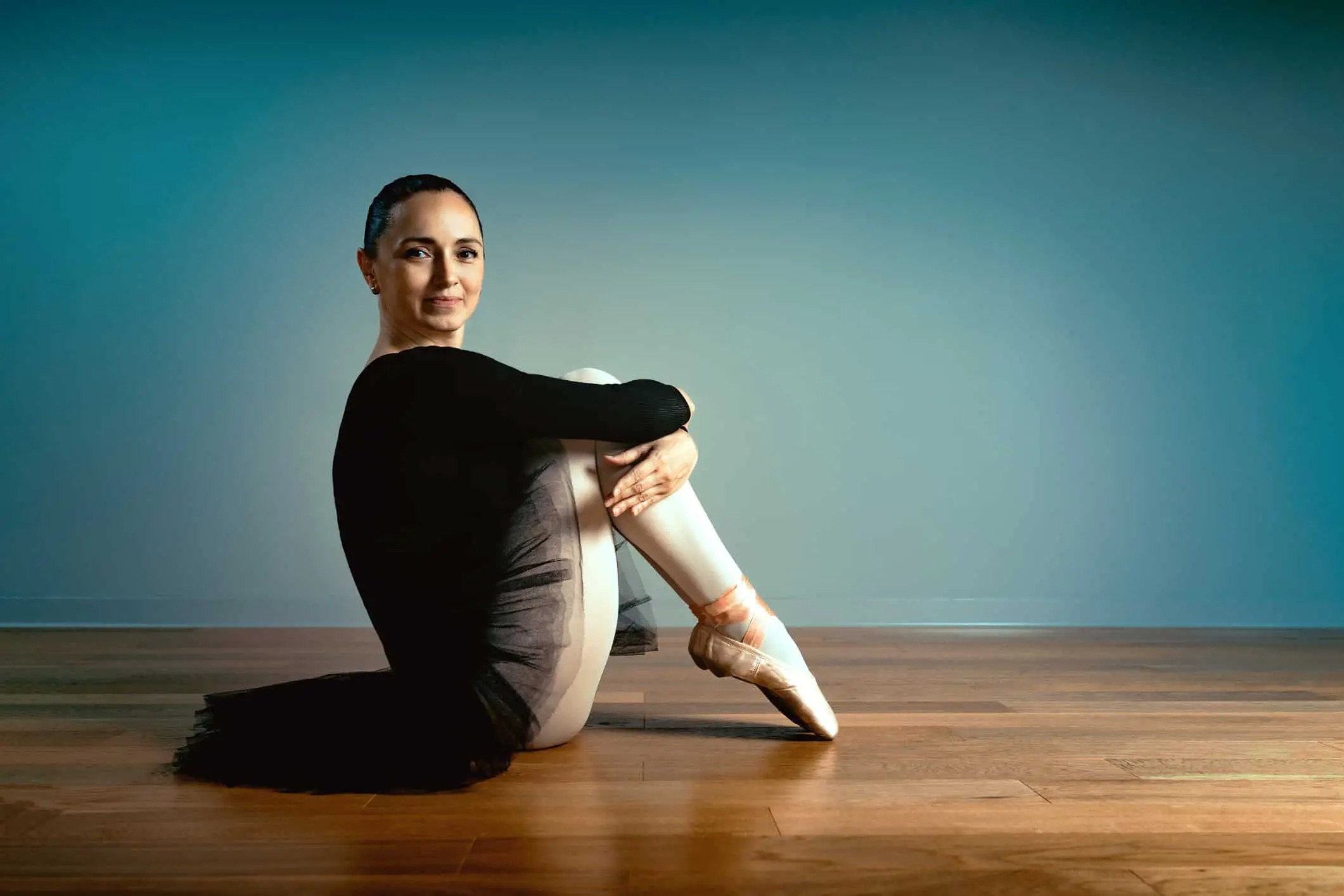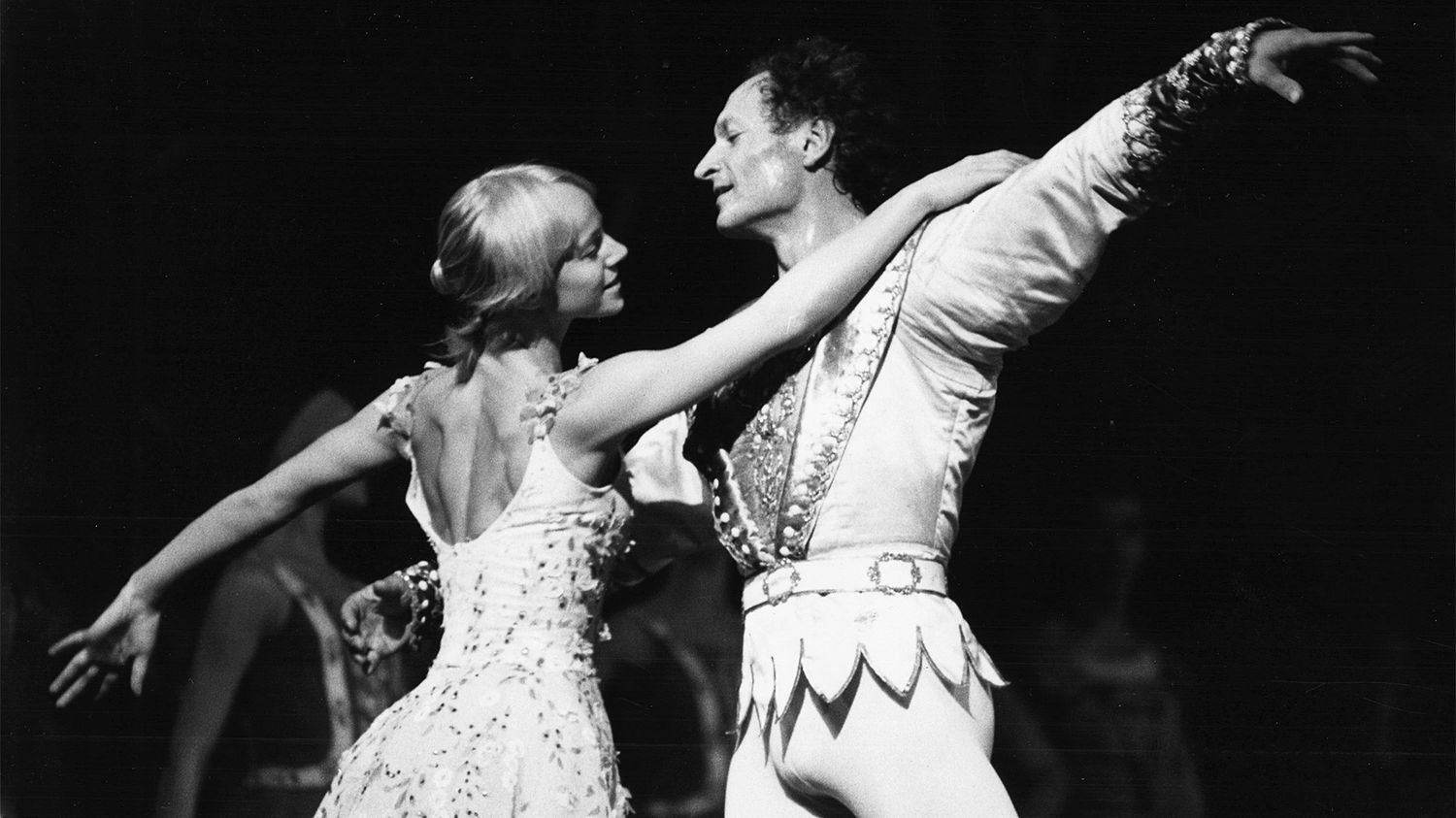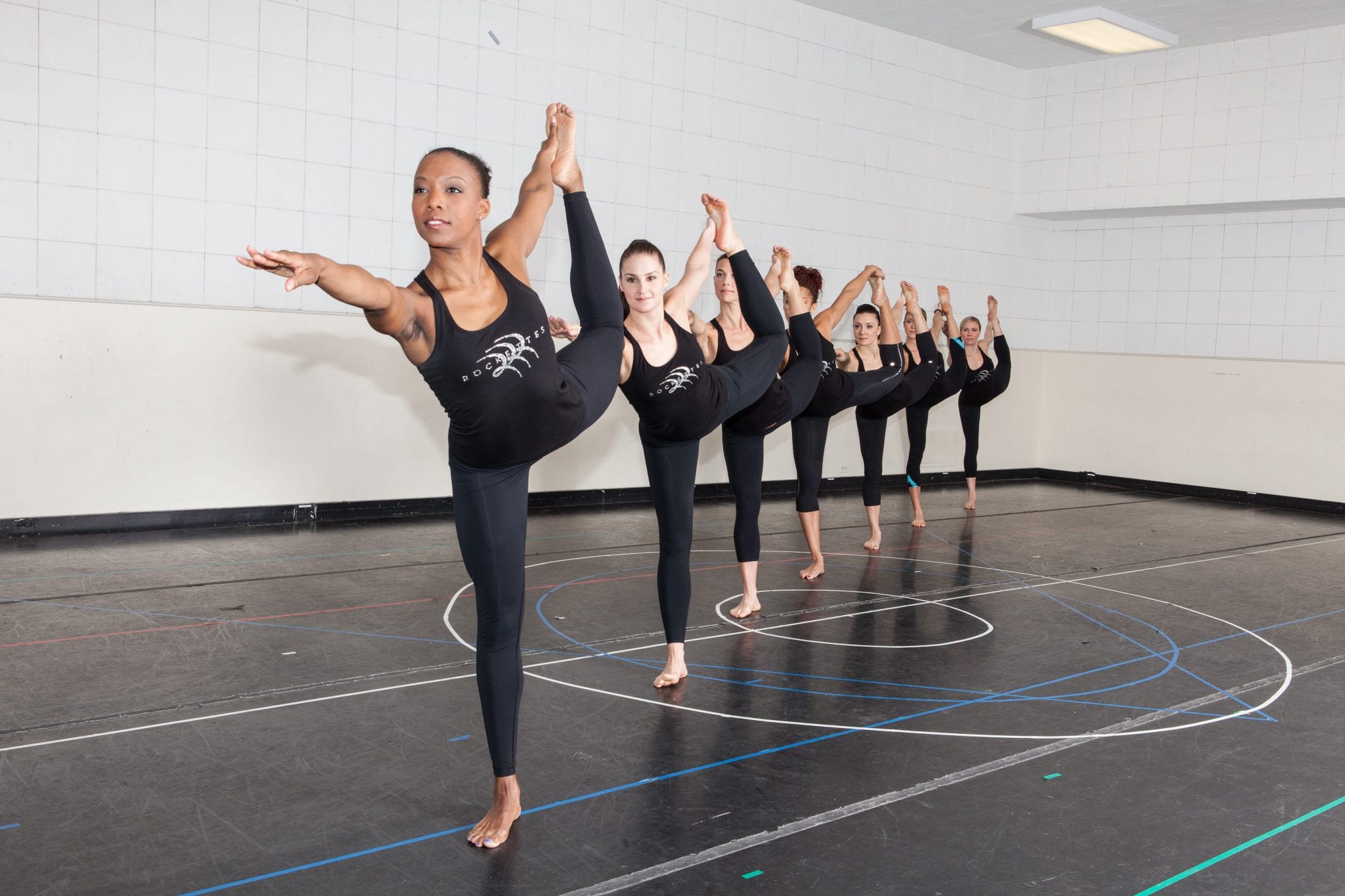Home>Events & Info>Ballet>At What Age Do Ballet Dancers Retire


Ballet
At What Age Do Ballet Dancers Retire
Modified: January 22, 2024
Discover the average retirement age of ballet dancers and learn about the factors that may influence their career longevity in the world of ballet.
(Many of the links in this article redirect to a specific reviewed product. Your purchase of these products through affiliate links helps to generate commission for AudioLover.com, at no extra cost. Learn more)
Table of Contents
Introduction
Ballet is a captivating art form that requires immense skill, discipline, and dedication. It is a dance style that demands physical strength, flexibility, precision, and grace. Ballet dancers are known for their incredible technique and ability to tell stories through their movements. However, like any athletic pursuit, ballet has its limitations, and dancers cannot perform at their peak forever. This leads us to the question: at what age do ballet dancers retire?
Retirement in the world of ballet is a topic that generates curiosity and speculation. While some dancers can continue performing well into their 40s and even beyond, there comes a point in every dancer’s career when their bodies and minds need to rest and recover. Retirement age in ballet can vary widely depending on various factors, including individual circumstances, physical condition, career aspirations, and personal choices.
In this article, we will delve deeper into the factors that influence the retirement age of ballet dancers. We will explore the physical demands of ballet, the emotional and mental challenges that dancers face, the career opportunities that may await them post-retirement, and examine case studies of retired ballet dancers. Additionally, we will discuss famous ballet dancers who retired early and the impact it had on their careers.
By understanding the complexities surrounding retirement in ballet, we can gain insights into the lives of these exceptional artists and appreciate the artistry and dedication it takes to excel in this beautiful dance form.
Background on Ballet
Ballet originated in the Italian Renaissance courts of the 15th century and later developed into a distinct dance form in France and Russia. It is characterized by its graceful and precise movements, often accompanied by music and storytelling. Over the centuries, ballet has evolved into a highly technical and demanding art form, with its own terminology and repertoire of steps.
Ballet requires years of rigorous training and a strong foundation in technique. Dancers begin their journey at a young age, starting with ballet classes that focus on developing strength, flexibility, and proper body alignment. As they progress, they move through different levels and may ultimately audition for a professional ballet company.
Ballet dancers are admired for their extraordinary physical abilities. They possess incredible strength, balance, and control, and are able to execute intricate movements with precision and delicacy. Their training involves hours of daily practice, including ballet technique classes, pointe work for female dancers, and rehearsals for performances.
Ballet also involves an aesthetic component, with dancers striving to create beautiful lines and lines in their movements. This requires a sense of artistry and expression, alongside technical proficiency.
Overall, ballet is an art form that demands dedication, passion, and perseverance. It is a physically and mentally challenging pursuit that pushes dancers to their limits. As such, the career span of a ballet dancer is finite, and retirement is an inevitable part of the journey.
Factors Influencing Retirement Age
Retirement age in ballet can vary greatly due to a combination of factors that influence a dancer’s physical and mental readiness to step away from the stage. Here are some of the key factors that can influence when a ballet dancer decides to retire:
- Physical condition: Ballet is a physically demanding art form. Continuous strain and repetitive movement can lead to injuries and wear and tear on the body. The physical condition of a dancer plays a significant role in determining their retirement age. Some dancers may retire earlier due to chronic injuries or physical limitations, while others may continue performing well into their forties and beyond if they maintain excellent physical health.
- Career aspirations: The career aspirations of a ballet dancer can also impact their retirement age. Some dancers may have specific goals, such as becoming a principal dancer or performing in certain iconic roles. Once these goals are achieved, they may choose to retire from performing and explore other avenues within the dance field, such as teaching or choreographing.
- Personal choice: Retirement age in ballet is ultimately a personal decision. Some dancers may feel the need to retire earlier to prioritize their physical and mental well-being, while others may choose to continue performing as long as possible. Each dancer has their own unique journey and timeline, and their personal choices can influence when they retire.
- Mental and emotional readiness: The mental and emotional challenges of a career in ballet should not be overlooked. The intense pressure to maintain a certain level of perfection, the competitiveness of the dance world, and the demanding nature of touring and performing can take a toll on a dancer’s mental and emotional well-being. When a dancer feels emotionally and mentally ready to move on from performing, it can impact their decision to retire.
Ultimately, the retirement age of a ballet dancer is a complex and individual decision influenced by a combination of factors. It is important to respect and support dancers in their choices, as they navigate the transition from their performing careers to the next chapter of their lives.
Physical Demands of Ballet
Ballet is renowned for its physical demands, requiring dancers to possess exceptional strength, flexibility, and control. The physical requirements of ballet are intense, and understanding them sheds light on why retirement becomes a necessary consideration for dancers. Here are some of the key physical demands of ballet:
- Strength: Ballet dancers must have a high level of strength to execute the precise and controlled movements of the dance form. They need strength in their core, legs, and upper body to maintain balance, hold positions, and execute jumps and lifts.
- Flexibility: Flexibility is a crucial component of ballet, as dancers are required to achieve extreme range of motion in their joints. They must be able to stretch and elongate their muscles, allowing for graceful movements and the extension of limbs in various positions.
- Endurance: Ballet performances can be physically demanding and require dancers to have exceptional endurance. They must be able to sustain energy and technique throughout lengthy rehearsals and performances, often while wearing pointe shoes.
- Coordination: Ballet dancers must possess excellent coordination to smoothly execute complex movements involving multiple body parts simultaneously. Their movements must be seamlessly connected and flow from one step to the next.
- Balance: Maintaining balance is crucial for ballet dancers, as they often perform intricate steps on one leg or execute challenging balances and turns. They need a finely tuned sense of balance and body control to achieve stability and gracefulness.
- Precision: The precision required in ballet is unparalleled. Dancers must have the ability to execute movements with impeccable technique, hitting specific positions and angles with accuracy and precision.
These physical demands can place significant strain on a dancer’s body over time. The repetitive nature of ballet movements, combined with the impact of jumps and the strain of dancing en pointe for female dancers, can lead to injuries and physical wear and tear. As dancers age, it becomes increasingly challenging to maintain the same level of physical ability and recover from injuries.
It is important to recognize and appreciate the immense physicality of ballet and the toll it can take on the dancers’ bodies. Retirement allows dancers to prioritize their physical health and well-being, ensuring a sustainable future beyond their performing careers.
Emotional and Mental Challenges
Beyond the physical demands, ballet also presents unique emotional and mental challenges for dancers. The intense nature of the art form, coupled with the competitive environment, can take a toll on a dancer’s well-being. Understanding these challenges is crucial in comprehending the factors that contribute to retirement. Here are some of the emotional and mental challenges faced by ballet dancers:
- Perfectionism: Ballet is often associated with perfectionism, as dancers strive for impeccable technique and execution. This pressure to achieve perfection can lead to feelings of self-doubt and a constant desire to meet unattainable standards.
- Competition: Ballet is a highly competitive field, with limited opportunities for advancement and recognition. Dancers often compete for roles and promotions, which can create a stressful and competitive environment that impacts their emotional well-being.
- Insecurity and self-esteem: Ballet dancers are constantly evaluated and compared to their peers, which can lead to feelings of insecurity and affect their self-esteem. The intense scrutiny of their bodies and physical appearance can also contribute to body image issues and self-doubt.
- Pressure and expectations: Ballet dancers face immense pressure and expectations from themselves, their teachers, and their audience. They are expected to perform flawlessly, even in demanding and physically exhausting circumstances. This pressure can lead to stress, anxiety, and burnout.
- Transitions and career uncertainty: The transitional nature of a career in ballet can be emotionally challenging. Dancers often face uncertainty about their future, particularly as they age and consider retirement. The question of what comes next after a performing career can be daunting and contribute to emotional stress.
- Mental health: Ballet dancers are not immune to mental health challenges. The demanding nature of the art form and the pressures they face can impact their mental well-being. Issues such as anxiety, depression, and eating disorders can affect dancers and may contribute to their decision to retire.
It is crucial to acknowledge and support dancers in navigating these emotional and mental challenges. Retirement can provide an opportunity for dancers to prioritize their mental and emotional well-being, seek balance in their lives, and explore new avenues of personal and professional growth beyond the stage.
Career Opportunities Post-Retirement
Retirement from performing does not mark the end of a ballet dancer’s career. Many opportunities await dancers beyond their time on stage, allowing them to continue their involvement in the world of ballet. Here are some potential career opportunities post-retirement:
- Teaching and coaching: Many retired ballet dancers choose to share their knowledge and expertise by becoming ballet teachers or coaches. They can pass down their skills and experience to the next generation of dancers, shaping the future of ballet.
- Choreography: Retired dancers often transition into choreography, creating their own unique artistic works. Drawing from their years of experience and understanding of movement, they can craft compelling and innovative choreographic pieces for ballet companies, schools, or independent projects.
- Artistic direction and management: Some ballet dancers find fulfillment in assuming leadership roles within ballet companies. They may take on positions such as artistic directors or company managers, where they can use their knowledge and artistic vision to shape the direction of the company and support emerging dancers.
- Physical therapy and rehabilitation: Given their firsthand knowledge of the physical demands and injuries associated with ballet, retired dancers may pursue careers in physical therapy or rehabilitation. They can provide specialized care and support for dancers, helping them recover from injuries and maintain their physical well-being.
- Further education and research: Retirement can provide an opportunity for dancers to pursue further education in fields such as dance science, kinesiology, or dance therapy. They can contribute to research and advancements in the field, bringing their unique perspectives and insights.
- Mentoring and advocacy: Retired ballet dancers can serve as mentors and advocates for younger dancers, offering guidance, support, and inspiration. They can contribute to the development of the next generation of ballet artists and promote the importance of the art form in society.
These are just a few examples of the career opportunities that await retired ballet dancers. Each dancer’s path may differ based on their interests, skills, and aspirations. Post-retirement careers can provide a new sense of purpose and fulfillment, allowing dancers to continue making valuable contributions to the ballet community.
Case Studies of Retired Ballet Dancers
Examining the journeys of retired ballet dancers can provide valuable insights into the various paths they take after retiring from the stage. Here are a few case studies of notable ballet dancers and their post-retirement careers:
- Misty Copeland: Misty Copeland, a renowned American ballet dancer, retired from performing with American Ballet Theatre in 2021. Since then, she has shifted her focus to mentoring and advocacy. She is actively involved in promoting diversity and inclusion in ballet and has become a role model and inspiration for aspiring dancers around the world.
- Wendy Whelan: Wendy Whelan, a former principal dancer with New York City Ballet, retired from performing in 2014. After retirement, she focused on contemporary dance and choreography. She has collaborated with numerous choreographers and formed her own company, “Wendy Whelan New Works Initiative,” which commissions and supports new choreographic works.
- Carlos Acosta: Carlos Acosta, a Cuban ballet dancer, retired from performing in 2016. Following his retirement, he established the “Acosta Danza” company in Havana, Cuba. Acosta also choreographs and directs productions, using his expertise to nurture and showcase Cuban dancers and bring unique works to the international stage.
- Alessandra Ferri: Alessandra Ferri, an Italian ballet dancer, retired from ballet in 2007 but returned to the stage in 2013 for select performances. Since her official retirement, she has embraced a multifaceted career, collaborating with contemporary dance companies and choreographers. Ferri’s artistic exploration encompasses acting, creating her own productions, and mentoring young dancers.
- Edward Villella: Edward Villella, an American ballet dancer, retired from performing in 1980 and went on to have a successful career as a ballet director and teacher. He founded the Miami City Ballet in 1985 and served as its artistic director for over twenty years. Villella’s contributions to the ballet world extended beyond his own performing career.
These case studies exemplify the diverse paths ballet dancers can take after retiring from performing. From advocacy and teaching to choreography and artistic direction, retired ballet dancers have the opportunity to make significant contributions to the art form and leave a lasting impact on the dance community.
Famous Ballet Dancers Who Retired Early
While many ballet dancers continue performing well into their forties and beyond, there are notable cases of dancers who retired from the stage at a relatively young age. Here are a few famous ballet dancers who retired early:
- Sylvie Guillem: Sylvie Guillem, a French ballet dancer, retired from classical ballet in 2015 at the age of 50. Known for her extraordinary technique and artistry, Guillem decided to retire on her own terms and explore other forms of dance and artistic endeavors.
- Gelsey Kirkland: Gelsey Kirkland, an American ballet dancer, retired from performing with New York City Ballet in 1984 at the age of 29. Her decision to retire early was influenced by a combination of physical injuries, emotional struggles, and a desire to pursue new opportunities, including writing and teaching.
- Daria Klimentová: Daria Klimentová, a Czech ballet dancer, retired from performing with English National Ballet in 2014 at the age of 42. Despite still being at the height of her career, Klimentová chose to retire to focus on teaching, coaching, and spending more time with her family.
- Paloma Herrera: Paloma Herrera, an Argentine ballet dancer, retired from American Ballet Theatre in 2015 at the age of 39. After a successful career as a principal dancer, Herrera made the decision to retire from performing and focus on other endeavors, including teaching and coaching.
- Darcey Bussell: Darcey Bussell, a British ballet dancer, retired from performing with The Royal Ballet in 2007 at the age of 38. Following her retirement, Bussell has pursued a diverse range of activities, including television hosting, philanthropy, and serving as a judge on the reality TV show “Strictly Come Dancing.”
These dancers’ decisions to retire early were influenced by various factors, including physical limitations, personal goals, and a desire to explore new avenues. While their retirement from the stage left a void in the ballet world, their legacies endure, and they continue to inspire future generations of dancers.
Conclusion
Retirement in the world of ballet is a natural and inevitable part of a dancer’s career. Over time, the physical demands, emotional challenges, and personal aspirations of dancers contribute to the decision to step away from the stage. The retirement age of ballet dancers can vary widely, influenced by factors such as physical condition, career goals, personal choices, and mental readiness.
Ballet dancers dedicate their lives to mastering their craft, undergoing years of rigorous training and enduring the physical and mental strains of the art form. Retirement allows them to prioritize their well-being and explore new opportunities beyond performing. It opens doors to careers such as teaching, choreography, artistic direction, and advocacy, where their expertise and experience contribute to the growth and development of the ballet community.
Case studies of retired ballet dancers, such as Misty Copeland, Wendy Whelan, Carlos Acosta, Alessandra Ferri, and Edward Villella, highlight the diverse paths dancers can take after retirement. Their journeys serve as inspiration and demonstrate the longevity of a dancer’s impact on the world of ballet.
Additionally, there are famous ballet dancers who have chosen to retire early, such as Sylvie Guillem, Gelsey Kirkland, Daria Klimentová, Paloma Herrera, and Darcey Bussell. Their decisions were influenced by a variety of factors and have allowed them to pursue new ventures and make their mark outside of performing.
In conclusion, retirement in ballet marks the beginning of a new chapter in a dancer’s life. It is a time for them to reflect on their achievements, nurture their physical and mental well-being, and contribute to the broader ballet community through teaching, choreography, and other creative pursuits. Retirement may signify the end of their performing careers, but it opens doors to endless possibilities as they continue to inspire and shape the future of ballet.











